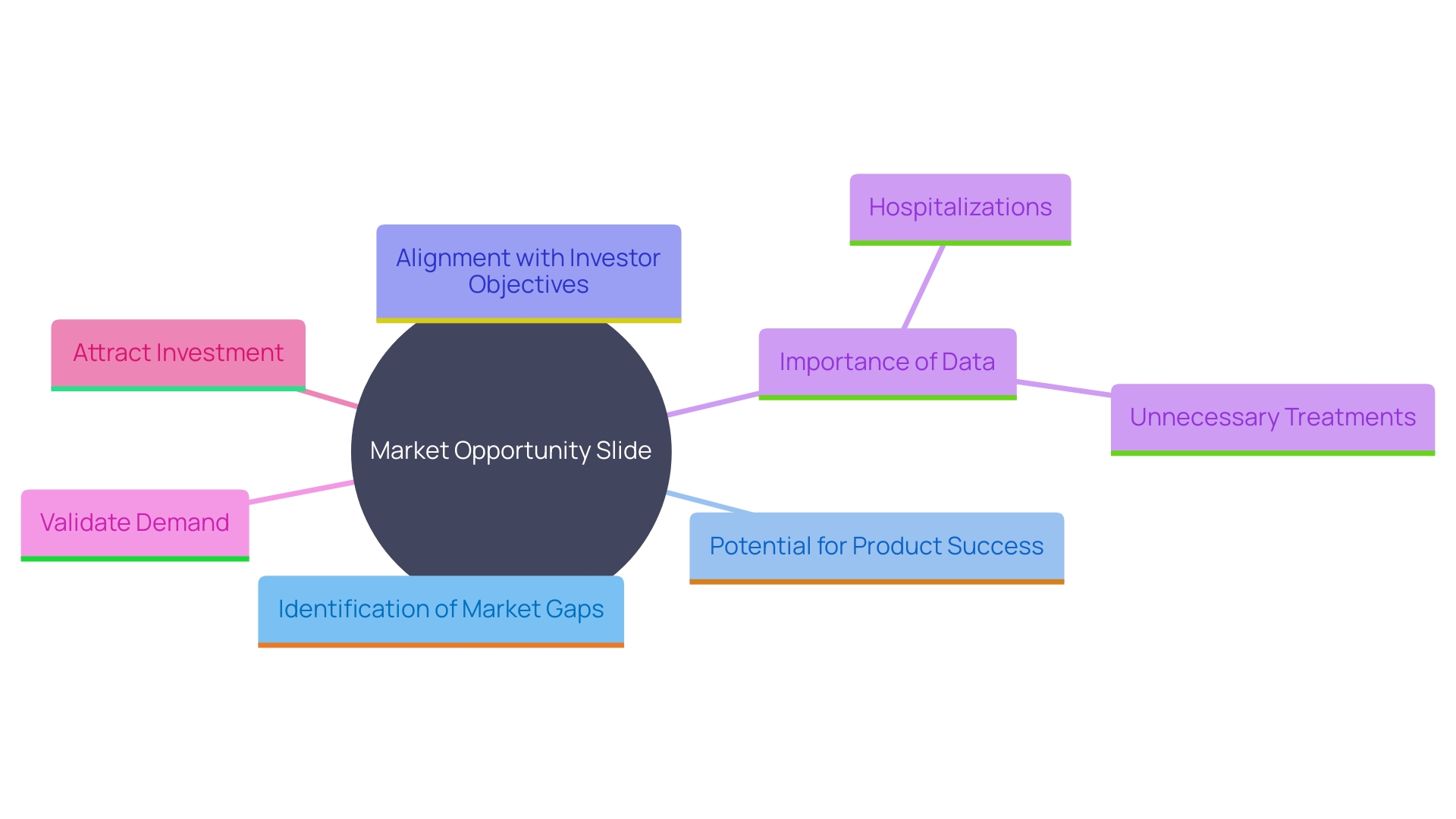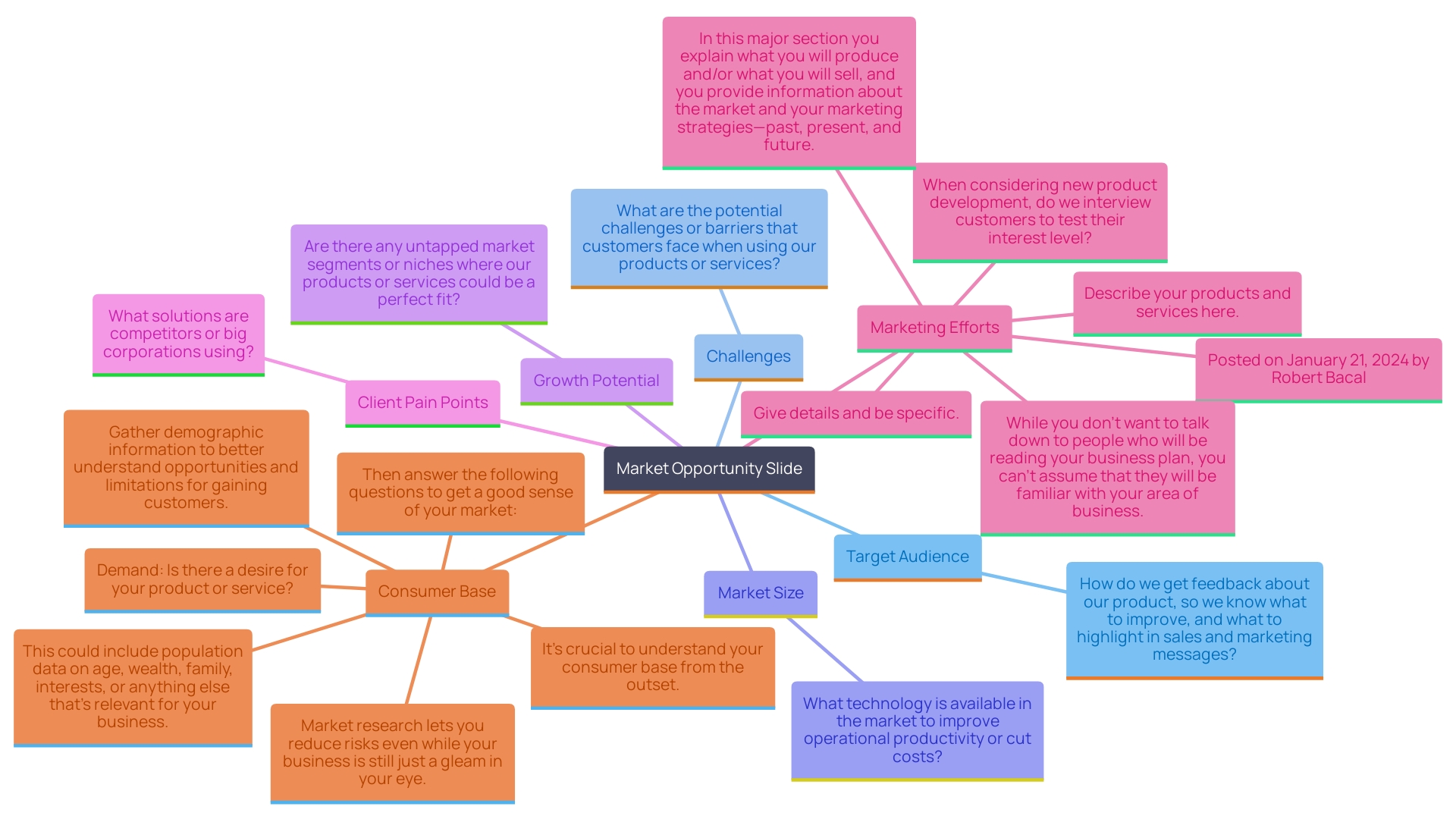Crafting an Impactful Market Opportunity Slide for Your Pitch Deck

Introduction
In today’s fast-moving business landscape, a powerful Market Opportunity Slide can determine whether your pitch wins investor attention or fades into the noise. This slide isn’t just a chart — it’s a story of potential, vision, and timing. When crafted strategically, it helps investors instantly see why now, why you, and why this market.
This guide breaks down how to design a Market Opportunity Slide that transforms raw data into a persuasive narrative. You’ll learn how to define your opportunity, highlight key trends, analyze competition, and showcase customer pain points — all backed by credible data and sharp design. With the right structure and supporting insights, your Market Opportunity Slide can shift perception from “interesting idea” to “undeniable growth opportunity.”
Understanding the Purpose of a Market Opportunity Slide
Your Market Opportunity Slide serves one mission — to prove that a massive, underserved demand exists and that your company is perfectly positioned to meet it. Rather than listing market stats, it should tell a story about inefficiency, urgency, and scale.
Show the gap your product fills — the pain, cost, or frustration currently left unresolved — and why that gap represents a billion-dollar opening. Use real-world data or case examples, like Astek Diagnostics highlighting hospital inefficiencies, to quantify the problem and validate your relevance.
Investors aren’t buying your product — they’re buying your market’s potential. A compelling slide connects emotion and economics, making the opportunity feel inevitable and the timing impossible to ignore.

Key Elements of a Market Opportunity Slide
A great Market Opportunity Slide combines logic and emotion. Start by defining your target customer and their key challenges. Then quantify your TAM (Total Addressable Market), SAM (Serviceable Available Market), and SOM (Serviceable Obtainable Market) with credible sources.
Next, articulate the pain point that drives adoption and how your solution fills it faster, cheaper, or better than existing alternatives. Support your claims with relevant trend data, visuals, and proof of traction.
Think of this slide as the magnet of your pitch deck — the part that attracts attention and makes investors envision scale. When done right, it reframes your startup as not just solving a problem, but unlocking a transformative economic opportunity.

Addressable Market Size and Growth Potential
Quantifying your market is the backbone of credibility. Investors want to see a large, growing, and reachable market. Break down your market by category, segment, or geography to demonstrate precision.
For example, the global eCommerce sector, spanning retail, consumer goods, and travel, has expanded at double-digit rates — driven by digital adoption and cross-border scalability. Highlight such tailwinds with credible third-party data and projections.
Go beyond size; show momentum. Whether it’s AI, fintech, or sustainability — emphasize how structural trends and policy changes are reshaping your space. Investors don’t just fund size; they fund growth velocity. When you show that your market is expanding faster than competitors can adapt, your valuation narrative strengthens instantly.
Market Trends and Competitive Landscape
Understanding market dynamics is where your strategic thinking shines. Spotlight the macro trends — technology, regulation, and consumer behavior — shaping your category.
For instance, the natural skincare industry exploded from $7B to $13B as consumers shifted toward cleaner, sustainable products. Similarly, AI and machine learning are redefining operations across industries by enhancing prediction, personalization, and efficiency.
Position your product as aligned with these forces — not reacting to them. Cite trusted research (like Juniper, McKinsey, or Statista) to prove your grasp of the ecosystem. When investors see that you understand the market forces and where they’re headed, they see a founder ready to lead — not just participate.
Target Customer’s Pain Points and Needs
Your opportunity exists because customers are struggling — show investors exactly how and why. Identify specific pain points and quantify their cost or emotional toll. Then, clearly link your solution to relief and measurable benefit.
Go beyond demographics — analyze behaviors, motivations, and unmet expectations. Use tools like Customer Surplus Value or Net Promoter Score correlations to demonstrate how much value users place on your product.
Remember Harvard’s Theodore Levitt’s timeless insight: “People don’t want a quarter-inch drill — they want a quarter-inch hole.” Investors fund businesses that understand why customers buy, not just who they are. A benefits-driven narrative grounded in data will make your slide persuasive and relatable.
Importance of Supporting Data and Evidence
Data transforms a good story into a credible investment thesis. Use reliable, third-party research to validate demand, size, and trends. Reference structured and unstructured datasets — from transaction logs to social signals — to reveal patterns others miss.
Clean, verified data builds trust. Use visualization tools to synthesize findings — dashboards, charts, or infographics that make insights accessible at a glance. Remember: your goal is not to overwhelm investors with numbers but to anchor belief in facts.
As Zora Neale Hurston said, “Research is formalized curiosity.” When your curiosity turns into evidence, investors see diligence, depth, and discipline — three traits they value most in founders.
Visual Presentation Techniques for Market Opportunity Slides
Design your slide to be immediately scannable. Investors should grasp your market size, trends, and opportunity within five seconds. Use large fonts, clean charts, and bold contrast. Incorporate visual storytelling — a market pyramid, growth curve, or heat map that conveys both scale and direction.
Our brains process visuals 60,000x faster than text — so let design carry the story. Make sure every visual element has a purpose: to clarify, not decorate. Avoid clutter, use icons or minimalist infographics, and align color palettes with your brand identity. A visually balanced slide communicates confidence and professionalism before you even speak.
Common Mistakes to Avoid in Market Opportunity Slides
Many startups lose investor interest not because their market is small, but because their slide is confusing. Avoid information overload — too many numbers, tiny fonts, or irrelevant stats weaken clarity. Keep your content audience-specific: what matters to a VC differs from what matters to a corporate partner.
Ditch the jargon. Instead of “multi-modal synergies across omnichannel nodes,” say “expanding from online to retail.” Simplicity sells. Tailor your slide to focus on investor priorities — ROI, scalability, and timing. Support with real data and use whitespace to breathe. Clean design = perceived competence.
When your message is crystal clear, investors stop questioning what you do and start asking how fast they can join.

Conclusion
A well-structured Market Opportunity Slide is more than an investor formality — it’s your strategic weapon. It validates the scale of your vision, proves you understand the ecosystem, and showcases the traction waiting to be unlocked.
By combining credible data, customer insight, and visual clarity, CMOs and founders can transform abstract markets into tangible billion-dollar stories. Focus on clarity, relevance, and evidence — and avoid the clutter that kills conviction.
In the end, investors fund inevitability. Your job is to make your opportunity look exactly that.
